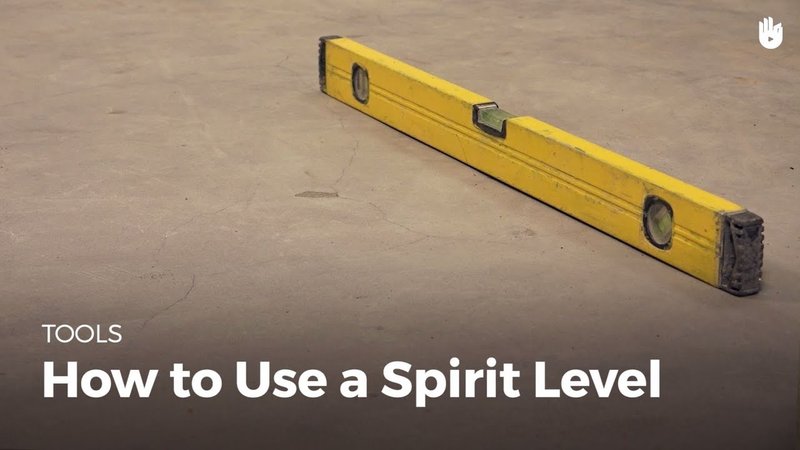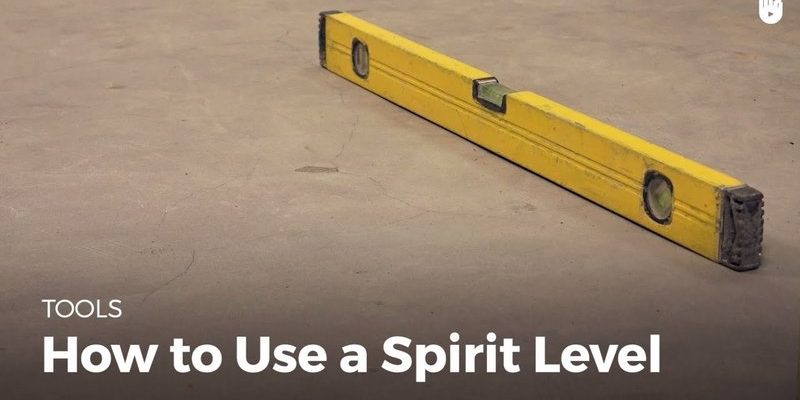
A *spirit level*—sometimes called a bubble level—might seem like an old-school carpenter’s tool. But whether you’re installing a Kwikset deadbolt, Schlage handle, or basic entry set, this handy device is your best friend for getting everything lined up perfectly. Honestly, it’s easier than you’d think. Let me walk you through using a spirit level for leveling exterior door hardware, from the basics to some clever troubleshooting tips.
What Is a Spirit Level and Why Does It Matter for Doors?
A spirit level is one of those classic hand tools with a bubble trapped inside liquid. When the bubble sits between two lines, you know the object is perfectly horizontal (level) or vertical (plumb). For doors, this little detail matters a lot. Even if your eyes say “good enough,” hardware that’s off by just a hair can create headaches—like doors that don’t latch, sticks that stick, or locks that jam.
You might be wondering, why not just eyeball it? Here’s the truth: Houses settle, wood can swell, and exterior door frames aren’t always as straight as they look. A spirit level gives you real proof that things are lined up properly. That means less fuss down the road, especially when you’re dealing with sensitive components like electronic locks or keypad deadbolts.
Think of your spirit level as a referee in a game where “close enough” isn’t good enough. It takes guessing out of the equation and helps you get a professional finish, even on your very first try.
Preparing Your Tools and Workspace
Before you grab that spirit level, let’s set up for success. First, make sure you have everything you need within reach. Besides the spirit level, you’ll want:
- A screwdriver (manual or powered, depending on your hardware)
- The door hardware kit (lockset, deadbolt, or handle—whichever you’re installing)
- Mounting screws and any included templates
- A pencil for marking
- Optional: a tape measure or ruler
Check that your workspace is clear. If your door swings open easily, prop it with a wedge or doorstop. You’ll want the door steady as you work—imagine trying to juggle a level, drill, and handle all at once! For exterior doors, weather can play a part, so pick a dry, calm day if possible. And don’t forget to check your spirit level itself—give it a quick clean and make sure it isn’t cracked or leaking. A wonky level won’t do you any favors.
Finally, if you’re replacing old hardware, remove it now. Keep those loose screws in a dish or pocket. Trust me, they disappear faster than socks in a dryer.
Understanding Level vs Plumb for Door Hardware
You’ll hear two key terms tossed around: “level” and “plumb.” Here’s a quick breakdown. *Level* means perfectly horizontal—think of a tabletop. *Plumb* means perfectly vertical—like a flagpole. When installing exterior door hardware, you’ll want both. The latch and strike plate, for example, should be plumb so the lock slides smoothly. The handle set or keypad should be level so it lines up with your hand naturally.
Let me explain why this matters. If your deadbolt isn’t plumb, it may not fully extend into the hole, making your door less secure. Locks and handles that aren’t level can feel awkward and may wear out faster. It’s not just about looks—it’s about function and safety.
So, as you attach each piece of hardware, ask yourself: “Is this level? Is this plumb?” Checking both axes with a spirit level ensures everything works right. If you’ve ever had a sticky lock, you know how frustrating it can be. Leveling from the start saves you trouble later.
How To Use a Spirit Level When Installing Door Hardware
Now for the main event. Using a spirit level for leveling exterior door hardware isn’t rocket science, but the order matters. Here’s a simple step-by-step:
- Hold or lightly attach your hardware in place—don’t fully tighten yet.
- Place your spirit level on top of the deadbolt or handle. Check the bubble. If it’s centered, you’re level. If not, adjust until it is.
- For vertical (plumb) alignment, stand your level against the long edge of the hardware or the edge of the door. Again, look for that centered bubble.
- Mark the correct position with a pencil if needed. Now, install screws partway, re-check with the level, and only then fully tighten everything.
Here’s a tip: Many door hardware brands like Kwikset and Schlage include little alignment tabs or built-in levels. If your set has these, great—but always double-check with your own spirit level for total accuracy.
If you’re working solo, don’t be afraid to use a bit of tape to hold the hardware in position while you check and adjust. It’s like having a third hand when you need it most. Take your time—rushing is when mistakes sneak in.
Troubleshooting Common Spirit Level Problems
You might run into a few hiccups as you go. Sometimes the level doesn’t sit flat on a rounded or ornate handle. Or maybe the bubble never quite lands in the middle, no matter what you do. Here’s how to handle the most common issues:
- Crooked Door Frames: Many older homes have frames that aren’t perfectly square. If this is your situation, focus on making the hardware level to your eye and hand, even if it looks a bit off against the frame. Function comes first.
- Sticky Bubbles: If your spirit level bubble seems stuck or slow, the liquid might be old or the vial dirty. Clean with a soft cloth, and if it’s leaking or cracked, get a new one. A faulty tool can drive you crazy.
- Hardware Won’t Stay Put: If your screws strip or don’t hold, double-check that you’re using the right size drill bit and fastener. Sometimes, switching to a slightly longer screw solves the problem.
If you find yourself fighting the process, step back. Sometimes a warped door needs a bit of creative adjustment—or maybe a professional touch. Don’t be afraid to ask for help if things feel truly off.
Tips for Using a Spirit Level with Different Door Hardware Types
Not all exterior door hardware is created the same. Mortise locks, keypad entries, lever handles—each has its quirks. For example, a mortise lock requires careful attention to plumb because the internal mechanism spans the thickness of the door. Electronic keypads, on the other hand, need to be level for both looks and proper function, especially for the battery connections inside.
You might be wondering about smart locks or remotes. Many of these, like the August Smart Lock or a Ring keypad, come with install templates. Still, always use your spirit level rather than relying solely on guides. Technology can’t replace good old-fashioned checking!
If you’re replacing a universal remote-controlled lock, unpair and reset the device before installation. This might seem off-topic, but it’s part of troubleshooting: if the lock code won’t sync or the remote won’t pair, misaligned batteries or poorly seated hardware could be the cause. Keeping everything level helps avoid these headaches.
Alternatives to a Traditional Spirit Level
Maybe you don’t have a classic bubble level handy. Don’t worry—you have options. Many smartphones now offer a built-in level tool using their accelerometer. It’s not as precise as a dedicated tool, but works in a pinch for leveling exterior door hardware.
Laser levels are another upgrade. They throw a straight, highly visible line across your door, making it easy to align multiple points at once. These are especially helpful if you’re installing double hardware sets or matching up with existing features. Just remember, whichever tool you use, the principle stays the same: *line up the hardware so it works and looks right*.
If you must eyeball it, step back, close the door, and look from different heights and angles. Sometimes, a perfect technical level isn’t as important as consistent appearance. Especially with older homes, a little visual judgment goes a long way.
Why Leveling Exterior Door Hardware Matters Long-Term
It’s tempting to rush and skip double-checking with a spirit level. But let’s be real: a small mistake now can cause big annoyances later. Leveling hardware means your lock will latch securely every time. Your smart keypad will connect without weird resets. Batteries in electronic locks will sit properly (saving you from battery troubleshooting). Even universal remotes and coded entry systems last longer when components line up as designed.
Plus, properly leveled hardware just looks better. Friends, neighbors, and even delivery folks notice when a door is straight and solid. It’s a subtle sign that you care about your home—and that’s never a bad thing.
If you’re investing in a quality lock, handle, or keypad, taking five extra minutes with a spirit level helps you get the full value. That extra care means less maintenance, fewer sync or pairing issues with smart devices, and a much smoother daily experience.
Closing Thoughts: Make Spirit Leveling Your Go-To Habit
Once you start using a spirit level for leveling exterior door hardware, it’ll quickly become second nature. The tool is simple, but the payoff is huge—no more misaligned locks, sticky handles, or frustrating resets with your smart entry system. Whether you’re installing a new Schlage keypad, swapping batteries in your August Smart Lock, or just updating a trusty deadbolt, that bubble keeps everything straight.
So next time you pick up screwdriver and hardware, grab your spirit level too. You’ll thank yourself every time your door closes smoothly, your code syncs perfectly, or your remote works on the first try. Leveling is one of those tiny details that makes a world of difference—and it’s totally within your reach.
